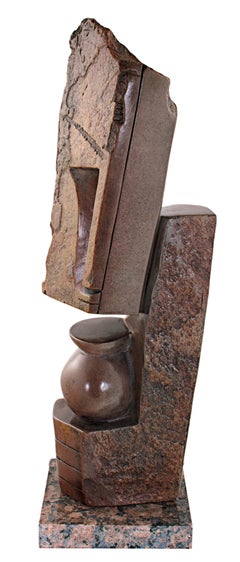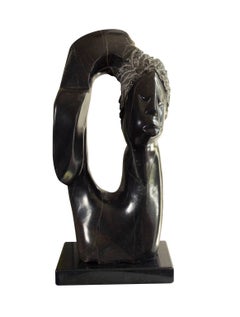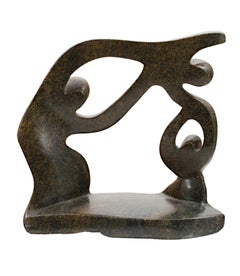Casper Darare
Early 2000s Abstract Figurative Sculptures
Stone
Early 2000s Figurative Sculptures
Stone
Recent Sales
Early 2000s Figurative Sculptures
Stone
People Also Browsed
Early 20th Century Pre-Raphaelite Figurative Paintings
Oil
Mid-20th Century French Mid-Century Modern Screens and Room Dividers
Pine
Antique 15th Century and Earlier African Natural Specimens
Bone
Antique Early 19th Century English High Victorian Taxidermy
Other
Antique 15th Century and Earlier American Natural Specimens
Stone
Vintage 1940s French Art Deco Wall Lights and Sconces
Bronze, Nickel
21st Century and Contemporary Books
Foil
Vintage 1930s Swedish Art Deco Vases
Silver
Antique Late 19th Century European Moorish Architectural Elements
Wrought Iron
21st Century and Contemporary Nepalese Modern Western European Rugs
Cotton
Antique Mid-19th Century American Victorian Fountains
Concrete
2010s Contemporary Nude Photography
Archival Paper, Photographic Paper, C Print, Color, Polaroid
21st Century and Contemporary Dutch Post-Modern Wall Clocks
Steel
Vintage 1950s Swiss Modern Planters and Jardinieres
Concrete
Antique 18th Century Dutch Baroque Ceramics
Ceramic, Pottery
Antique Late 19th Century German Belle Époque Figurative Sculptures
Silver
Farai Darare for sale on 1stDibs
Farai Walter Darare was born in Murewa, Zimbabwe on March 16, 1980. He started carving when he was just seven years old and was inspired to become an artist by his very famous father, Casper Darare. His father wanted his son to go to college and university but Farai said once sculpting is in you, you can never get it out. When Farai graduated in 1996, he started selling his pieces full time. He took pieces to South Africa to sell and eventually stayed and worked with his father there for four years until his father tragically passed away. At first, he started with creative abstracts but soon he was carving busts and realist pieces.
"I think and feel that I have my father’s touch. My strength lies in my amazing ability to create the exact work my father used to carve," says Farai.
After his father's death, Farai returned to Zimbabwe. Farai says that women are the source of his inspiration. He loves to sculpt them and to uncover their inner beauty. He feels that women are not respected or appreciated enough and he wants to let the world know how important they are. Farai adds, "They are our mothers, sisters or daughters; they look after us and care so much about us. They are soft and warm and loving." Farai's work is very creative, original and well-polished. He is an enthusiastic and dedicated artist with great things ahead. His pieces are very popular and can be found in private collections all over the world.
Finding the Right Figurative-sculptures for You
Figurative sculptures mix reality and imagination, with the most common muse being the human body. Animals are also inspirations for these sculptures, along with forms found in nature.
While figurative sculpture dates back over 35,000 years, the term came into popularity in the 20th century to distinguish it from abstract art. It was aligned with the Expressionist movement in that many of its artists portrayed reality but in a nonnaturalistic and emotional way. In the 1940s, Alberto Giacometti — a Swiss-born artist who was interested in African art, Cubism and Surrealism — created now-iconic representational sculptures of the human figure, and after World War II, figurative sculpture as a movement continued to flourish in Europe.
Lucian Freud and Francis Bacon were some of the leading figurative artists during this period. Artists like Jeff Koons and Maurizio Cattelan propelled the evolution of figurative sculpture into the 21st century.
Figurative sculptures can be whimsical, uncanny and beautiful. Their materials range from stone and wood to metal and delicate ceramics. Even in smaller sizes, the sculptures make bold statements. A bronze sculpture by Salvador Dalí enhances a room; a statuesque bull by Jacques Owczarek depicts strength with its broad chest while its thin legs speak of fragility. Figurative sculptures allow viewers to see what is possible when life is reimagined.
Browse 1stDibs for an extensive collection of figurative sculptures and find the next addition to your collection.






